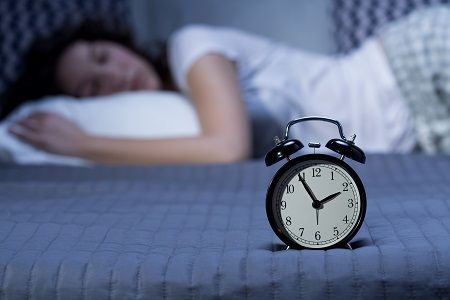Article
Lemborexant Shows Promise for Sleep Disorders
Author(s):
Experimental drug lemborexant underwent several phase 3 studies presented at the annual SLEEP 2019 meeting.

The 33rd annual meeting of the Associated Professional Sleep Societies (SLEEP 2019) in San Antonio, TX, was highlighted by the presentation of several studies on lemborexant, an investigational agent for sleep-wake regulation.
Lemborexant, which could potentially treat insomnia, sleep-wake disorders, and irregular sleep-wake rhythms disorders (ISWRD), is a small molecule compound that inhibits orexin signaling by binding competitively to both orexin receptor subtypes, promoting periods of wakefulness. Lemborexant's New Drug Application (NDA) was accepted by the US Food and Drug Administration (FDA) earlier this year; a target Prescription Drug User Fee Act (PDUFA) date is set for December 27, 2019.
Prior to SLEEP 2019, lemborexant underwent several Eisai-funded phase 3 studies of its effectiveness and safety" a SUNRISE 1 one-month study in adults aged 55 and over, and a SUNRISE 2 one-month study in adults aged 18 and over. SUNRISE 1 and 2 were both multicenter, randomized, double-blind, placebo-controlled, active comparator, parallel-group studies, conducted in North America and Europe. Each study (SUNRISE or otherwise) was presented via a poster, but the various studies overlapped significantly.
“Many patients battle sleepless nights and can struggle to function the next day,” Russell Rosenberg, PhD, D.ABSM, a principal investigator in the lemborexant studies and former chairman of the Board of the National Sleep Foundation, said in a statement. “These new findings presented at SLEEP 2019 provide further support for the potential role of lemborexant as a treatment option for the millions of people in the US suffering from insomnia."
The SUNRISE 2 study, which included 947 patients, focused primarily on the safety of lemborexant (lemborexant 5 mg, n= 314, lemborexant 10 mg, n= 314, placebo, n= 319). The study’s reported treatment-emergent adverse events (TEAEs) were primarily mild to moderate, with a very low rate of severe TEAEs (2.2% with lemborexant 5 mg; 2.9% with lemborexant 10 mg; 1.6% with placebo). The most common side effect was somnolence.
Additional phase 3 data assessing TEAEs showed a mild increase in moderate events when patients were placed on lemborexant (8.4% for lemborexant 5 mg; 10.9% for lemborexant 10 mg; 4.3% for placebo.) While still few overall, the incidence of serious TEAEs was 10.2% for lemborexant 5 mg; 12.8% for lemborexant 10 mg; and 7.0% for placebo.
The assorted phase 3 studies combined analysis of both SUNRISE 1 and SUNRISE 2, totaling 1,693 patients (lemborexant 5 mg, n= 582; lemborexant 10 mg, n= 584; placebo, n= 527). They also deliberately included a mix of both 402 male (23.7%) and 1,291 female (76.3%) patients; safety analyses included 404 (25.0%) male and 1,286 (75.0%) female patients.
Compared to baseline, Insomnia Severity Index (ISI) total scores decreased after one month of nightly use as measured by least squares mean (LSM) (-7.2 for lemborexant 5 mg; -7.5 for lemborexant 10 mg; — 5.5 for placebo).
"Treatment of insomnia can be challenging as it should address not only sleep onset and maintenance, but also the patient's ability to wake ready the next day," said Lynn Kramer, MD, chief clinical officer and chief medical officer, Neurology Business Group, Eisai. "Patients who participated in our pivotal Phase 3 studies and were treated with lemborexant experienced a reduction in Insomnia Severity Index scores, which include measures of daytime functioning."
The clinical threshold for insomnia—an ISI total of < 10—decreased for many patients within a month (33.0% for lemborexant 5 mg; 33.4% for lemborexant 10 mg; 20.3% for placebo). The 10 mg of lemborexant was the most successful, but even the 5 mg was an improvement when compared to the placebo (47.3% for lemborexant 5 mg, 47.8% for lemborexant 10 mg, 33.6% for placebo).
On average, when data from both SUNRISE 1 and 2 was combined (n= 1,693), sleep maintenance endpoints showed that patients taking lemborexant obtained more than 1 hour of additional sleep per night. When compared to the placebo, median reductions from baseline in subjective sleep onset latency (sSOL) were larger for lemborexant 5 mg and 10 mg during the first week of treatment (-12.9 for lemborexant 5 mg; -13.6 for lemborexant 10 mg; -2.9 for placebo) and after the first month (-16.1 for lemborexant 5 mg; -17.9 for lemborexant 10 mg; -5.2 for placebo).
Alongside sSOL improvements, lemborexant enabled median reductions from baseline in subjective wake after sleep onxet (sWASO) during the first week (-29 for lemborexant 5 mg; -37.9 for lemborexant 10 mg; -14.7 for placebo) and after the first month (-33.1 for lemborexant 5 mg; -41.3 for lemborexant 10 mg; -25.8 for placebo).
Subjective sleep efficiency (sSE) also showed improvement after the first week (8.4 for lemborexant 5 mg; 10.9 for lemborexant 10 mg; 4.3 for placebo) and month (10.2 for lemborexant 5 mg; 12.8 for lemborexant 10 mg; 7.0 for placebo).





